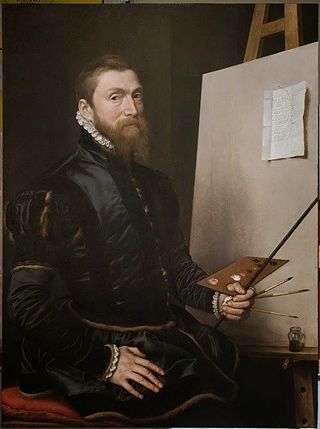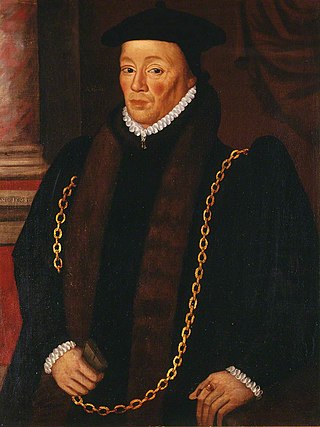


Giovanni Battista di Quadro (Polish : Jan Baptysta Quadro, Latin : Joannes Baptista Quadro; died between 10 April 1590 and 16 January 1591) was an Italian Renaissance architect active in Poland.



Giovanni Battista di Quadro (Polish : Jan Baptysta Quadro, Latin : Joannes Baptista Quadro; died between 10 April 1590 and 16 January 1591) was an Italian Renaissance architect active in Poland.
He was born Ponte Tresa or Cadro, near Lugano (today Switzerland).
Until 1550, he probably worked in Saxony and Silesia, but on 13 March 1550, he signed a contract with the city council of Poznań for rebuilding the town hall. In 1551, with the agreement of the council, he went to Płock as a consultant on the renovation of the cathedral. In the same year, his name was mentioned in the court books of Poznań because of links between him and the Bishop of Poznań Benedykt Izdebski relating to building the bishop's palace in Krobia. From 1552 to 1562, di Quadro was the City Architect of Poznań, but the City Council also paid him in 1563, 1566, 1567, and 1570 for minor works. During these years, he worked for the citizens of Poznań and the clergy and nobles of Greater Poland.
From 1568 to 1572, he worked in Warsaw, rebuilding today's Royal Castle.[ clarification needed ]
His many well-paid jobs made him wealthy. However, after he retired in 1573, he died as an indebted person in Poznań.
During the years 1550-1552, his brothers Antoni, Gabriel, and Kilian di Quadro also worked in Poznań.
Works (existing and no longer existing) attributable to him, on analysis of style and unverified documents):

Andrea Palladio was an Italian Renaissance architect active in the Venetian Republic. Palladio, influenced by Roman and Greek architecture, primarily Vitruvius, is widely considered to be one of the most influential individuals in the history of architecture. While he designed churches and palaces, he was best known for country houses and villas. His teachings, summarized in the architectural treatise, The Four Books of Architecture, gained him wide recognition.

Anthonis Mor, also known as Anthonis Mor van Dashorst and Antonio Moro, was a Netherlandish portrait painter, much in demand by the courts of Europe. He has also been referred to as Antoon, Anthonius, Anthonis or Mor van Dashorst, and as Antonio Moro, António Mouro, Anthony More, etc., but signed most of his portraits as Anthonis Mor.

Poznań Town Hall is a historic city hall in the city of Poznań, Poland, located at the Poznań Old Town in the centre of the Old Market Square. It used to serve as the seat of local government until 1939, and now houses a museum. The town hall was originally built in the late 13th century following the founding of the medieval city in 1253; it was rebuilt in roughly its present-day form, in mannerist style, with an ornate loggia, by Giovanni Battista di Quadro from 1550–1560. The display of mechanical fighting goats, played out daily at noon above the clock on the front wall of the building, is one of the city's main tourist attractions.

The Poznań tram system is a tramway operated by Miejskie Przedsiębiorstwo Komunikacyjne w Poznaniu Sp. z o.o.. It currently has 20 daytime lines, one night line, and one tourist line served by historical vehicles. The tram system consists of about 66 kilometres (41 mi) of route, operating on 1,435 mmstandard gauge track. With a few exceptions the tramlines operate on double tracks rail.
Nicholas Robinson was a Welsh Bishop of Bangor and correspondent of Lord William Cecil, Sir Francis Walsingham, and Robert Dudley, 1st Earl of Leicester. He was also a dean and vice-president of a college at Queens' College, Cambridge.

Sir William Garrard (1507–1571), also Garrett, Gerrarde, etc., was a Tudor magnate of London, a merchant citizen in the Worshipful Company of Haberdashers, who became alderman, Sheriff (1552–1553) and Lord Mayor of London (1555–1556) and was returned as an MP for the City of London. He was a senior founding officer of the Company of Merchant Adventurers to New Lands in 1554/55, having been involved in its enterprises since the beginnings in King Edward VI's time, and for the last decade of his life was one of its permanent governors. He worked hard and invested largely to expand English overseas trade not only to Russia and the Levant but also to the Barbary Coast and to West Africa and Guinea.
Richard Cheyney was an English churchman, bishop of Gloucester from 1562. Opposed to Calvinism, he was an isolated and embattled bishop of the reign of Elizabeth, though able to keep his see.
Thomas Lancaster was an English Protestant clergyman, Church of Ireland Archbishop of Armagh from 1568.

Poznań Old Town is the centermost neighbourhood of the city of Poznań in western Poland, covering the area of the once walled medieval city of Poznań. It is called Stare Miasto in Polish, although that name may also refer to the wider administrative district of Stare Miasto, which extends to most of the city centre and northern parts of the city.
John Véron was a French Protestant controversialist and preacher, known for his activities in England. Véron also served as an English translator for the English Privy Council.
Peter Morwen (1530?–1573?) was an English clergyman and Marian exile, known as a translator.
Kasper Goski was a Polish doctor, astrologer and the mayor of Poznań.

Johann Jakob Fugger or Hans Jakob Fugger was a German banker and patron of the arts and sciences from the von der Lilie line of the noted Fugger banking family.
LudovicoBeretta was an Italian architect of the Brescian renaissance. His work is considered emblematic of the development of the Renaissance architectural paradigm in the middle of the sixteenth century.